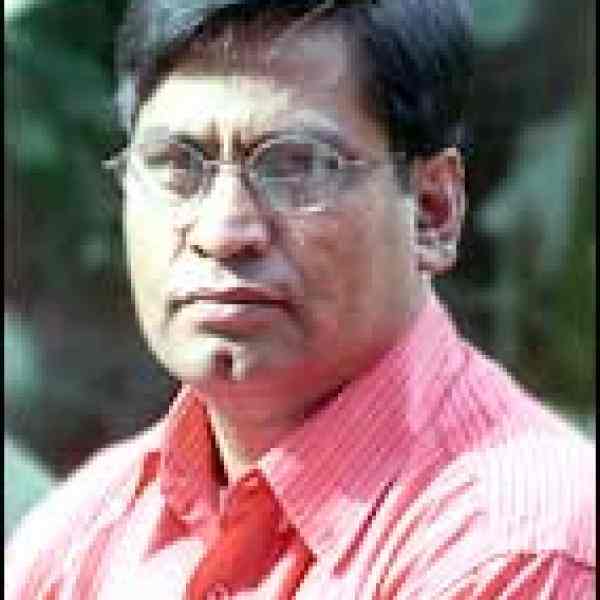Introduction
A firm believer in the participatory approach to service management systems, Ashok Bharti is founding community-based cooperatives as an alternative distribution mechanism for electricity to reach India’s slum dwellers.
The New Idea
Beginning with an electricity cooperative in Delhi’s slums, Ashok is reinventing the relationship between poor consumers and service providers and paving the way for an inclusive ownership structure of all civic amenities. Ashok is setting up cooperatives for the distribution of electricity in slums, using a participatory model that is profitable for both the private sector and the consumers. In doing so, he is replacing with quality service what is currently a corrupt system controlled by a power mafia, thereby turning poor people into legitimate consumers, connecting them with the democratic process, and protecting them from extortion as well as harassment from the authorities.
At the same time, Ashok is proving to the government and the private sector that his cooperative model is good business. This mutually beneficial model can serve as a template to spread further infrastructure and civic services to poor people, prompting the government to become more responsive, accountable and participatory in its social services.
Ashok is in the process of partnering with the Tata Power Company’s distribution arm, North Delhi Power Limited (NDPL), which supplies power to one-third of Delhi City, for his pilot program, and plans to continue this collaboration in spreading his model throughout India.
The Problem
Though slums comprise 20 to 40 percent of the population of large cities in India, slum dwellers are not part of the government’s development plans. Though important contributors to the informal economy, slum dwellers are considered squatters and therefore denied legitimate access to basic civic amenities like electricity or water. Instead, a thriving black market has sprung up to provide slum dwellers these services. The electricity used by slum dwellers reaches them through a parallel distribution system, one in which a local mafia “steals” power from a legitimate source and then sells it at high rates. The quality therefore is inferior, resulting in short circuits and voltage fluctuations which lead to spoilage of electrical products, hazards like fires, and deaths and maiming by electrocution. Sometimes entire residential areas are at risk from a single slum fire.
This illicit power supply is often disconnected for days, until the small-time local mafia who run the alternate system pay the necessary bribes. The implications of such illegal activities are not difficult to see. The mafia proliferates, attracting new recruits among young people; crime rates shoot up; day-to-day activities of school children, small-scale enterprises and other community members are disrupted; and the frustration at not receiving a necessary service, taken for granted by the more privileged, results in eruptions of violence and communal friction.
Having grown up in a slum himself, Ashok Bharti has been made distinctly aware of the government’s failure to provide civic services to the urban poor, despite the fact that because of their sheer numbers, they are the country’s biggest consumers. Through illegal distribution networks result in huge losses for public utilities, the government’s stance is at best opportunistic, turning a blind eye for fear of losing a sizeable vote bank.
During the last decade, the Indian government has moved towards the privatization of basic services, with varying degrees of success. Electric supply—in part or in whole—has been privatized in most major cities, though debates over privatization of water and transport services continue. In Delhi, the government manages power generation and bulk power transmission processes but distribution has been handed over to private companies.
Yet while private distribution companies have brought in corporate management skills, they continue to use the same local infrastructure that was used by the government-owned distributor. Therefore distribution in local slum communities remains in the hands of “contractors,” in most cases petty politicians who charge the mafia a commission of 10-15 percent for the parallel lines they operate. This corruption prevents fair distribution and regularized pricing even though the government, and now the private companies have, albeit on paper, subsidized pricing slabs for the poor. In effect, for want of an alternative structure and to avoid political complications, the private distribution companies continue to support the black economy at the cost of commercial losses. It is the opportune moment for the introduction of an alternate distribution system that effectively serves the slum dwellers and increases profitability for the distribution companies.
The Strategy
Ashok is providing the slum dwellers and the distribution companies with an alternative delivery structure that is a win-win situation for both. He has chosen the sprawling Haiderpur slum in Old Delhi to create a model electricity supply cooperative in direct partnership with distribution company NDPL. The cooperative acts as the regulatory body in the slum, managing distribution and collection and representing the community to the Regulatory Commission and NDPL. There are many implications of cutting out the supply chain middlemen. Challenges to such an arrangement include a general lack of knowledge and a feeling of intimidation on the part of slum dwellers as to how such a system can work, and the potential cost increase of direct supplier-to-consumer relations. Ashok’s efforts are therefore focused on two broad areas—social and technical.
Accustomed to dealing with the local mafia, whose vested interests make any such move a challenge, especially among communities which lack a culture of cooperation, Ashok’s approach is essentially people-centric. His strategy is “close interaction with the community through meetings, discussion and dialogues.”
Ashok brings the community together to discuss the issue at hand, spread information about how such a cooperative is beneficial, demystify the technology that is required to set up the service channels, and identify leaders among the community who can be part of the core group in all negotiations; lobbying and advocacy with stakeholders, service providers and the government. Ashok then involves the community in carrying out an assessment of their needs, and works closely with the chosen cooperative members on capacity building and training.
Part of Ashok’s community strategy is to form self-help groups for women, to further strengthen the cooperative spirit, and to encourage saving towards electricity charges so that they do not default on payments. The groups are also intended to streamline the process of collecting the cooperative’s fees and charges towards the service. This leadership role is unique for slum women, who usually do not take part in community decision-making, yet Ashok feels that because of their involvement with the family and its immediate needs, women must play a greater role in the management of electricity. He has therefore insisted on the presence of two women members on the fifteen-member cooperative panel.
On the technical front, participatory appraisal to assess the electricity consumption needs of each household is being carried out, along with a study of actual consumption of power, leakages, inefficiencies, and assessment of electric load. The assessments also incorporate a safety audit of each household to eliminate accidents and encourage conservation at the household level. Creating an inventory of the distribution equipment is also part of the exercise. Ashok is training and involving local electricians in the slums to contribute voluntarily towards helping out with losses, leakages, faults and breakdowns and in the actual operations of the cooperative.
This participatory approach demystifies the process, educating people on how to calculate their own consumption loads and identify the snags, all of which helps them manage and distribute electricity better. More importantly, involving the community at every step allows for transparency and ownership of the idea by the people. Only those who become members of the cooperative will receive the service. Two hundred and fifty households out of 5,000 have already signed up.
The ownership structure has paid dividends on the service provider’s front as well. Ashok’s argument is irrefutable: Supplying directly to the cooperative benefits the company in the long run and helps it achieve new targets. The consumers will pay the company directly, and the revenues can only grow as more and more people join the cooperatives. The company does not have to invest in a separate structure, and most importantly, their accounting books remain clean with no outflow to black market. NDPL has therefore agreed to supply the cooperative, serving a fixed number of units (estimated 500 volt ampere), enough to run a fridge, TV, tube light and a fan, to every household for a cost of Rs 175 a month. The government, on its part, is happy to have the burden of finding a solution to this problem off its shoulders.
While the costs are higher than what the people were paying the mafia, the benefits have far outweighed the additional expense. Assured of quality and uninterrupted supply, the people are also relieved by the fact that given the legal nature of the cooperative, neither the government authorities nor the power company can now disconnect the power supply at will.
On the political front, the power mafia supported by local politicians presents a big challenge. However, the combined pressure from the cooperative, the electric company, and the government has left them with no option but to come to the negotiating table. Ashok has welcomed their involvement, given their prior knowledge of power distribution. Strategically, Ashok is working to convince the political lobby that supporting such a community initiative can prove to be an even stronger source of votes.
Taking his entire concept of participatory governance quite a few steps further, Ashok is poised to launch a unique collective—that of slum partnerships, or “Sajedari”. The Delhi government has a “Bhagidari” system in which civic authorities work in partnership with citizen’s organizations in Delhi municipalities. Previously, slum dwellers were not included in this arrangement. Ashok is building a parallel system among slum dwellers whereby all slums in Delhi federate and become valid participants in the Bhagidari system, allowing for better negotiating power. He aims to partner with the Slum Improvement Board in this initiative. As of now, 32 slums have been identified for membership in the Sajedari, a network Ashok uses to spread his model of power cooperatives.
Ashok is optimistic that once the success of the power cooperatives has become known, the government itself will move in to replicate the initiatives not only in power, but other areas of civic services as well. In fact, the populist nature of the measure will act as an incentive for the government to enforce it. Ashok is also bringing in sector experts for evaluation and impact assessment studies in order to fine tune his model before presenting it to the rest of the country. This will help in convincing the government and other stakeholders on the efficacy of such structures.
The Person
The scar on Ashok’s right hand, the legacy of a near-electrocution by a naked electric cable, is there for all to see. Born in Basti Rajaram, a slum for untouchables near Jama Masjid in old Delhi, Ashok was one among seven children. His grandfather cut grass for fodder. His father, a tailor and a class four dropout, was apprenticed to a Muslim master tailor. However, being an untouchable he could not enter the unit and had to sit outside the shop. It took him eight years to learn his trade. In later years, Ashok’s father was responsible for introducing many Dalits to the profession of tailoring.
Growing up as a poor Dalit, Ashok has a clear understanding of the vulnerabilities of underprivileged communities. Yet his parents struggled hard to give all their children a good education. Ashok, on his own merit, managed to study in Hindu College, one of the best in Delhi, and then go on to the prestigious Delhi College of Engineering. He later studied manufacturing management for his post-graduate degree in Australia, where he served as president of the international students’ body and, later, as the central representative of the entire students’ body.
Active in the students’ movements of the 1980s, Ashok was deeply influenced by the teachings of Dalit leader Dr. B.R. Ambedkar, also known as the Father of the Indian Constitution. At 18, he organized a successful students’ strike to stop the transfer to another school of a building promised to his alma mater. He also founded a students’ organization called Mukti (Freedom) which brought about changes in the admission system of his university. The late 1980s were also a period of violent student agitations following the Mandal Commission report on the status of backward classes. Ashok was disappointed by many aspects of the movement, a feeling which led him to set up the Center for Alternative Dalit Media (CADAM) in 1995 that organized the first ever Dalit Women’s Conference. His work with CADAM also led to the formation of the National Conference of Dalit Organizations, a platform active in negotiating an inclusive identity for Dalits.
An officer belonging to the Indian Engineering Services, Ashok has held senior positions with the Gas Authority of India, the Central Electricity Authority and Power Grid Corporation of India, the national power grid, where he served as manager (transmission lines). His technical knowledge stems from his job experience. Ashok lives in Delhi with his wife, son, and mother.




